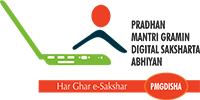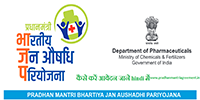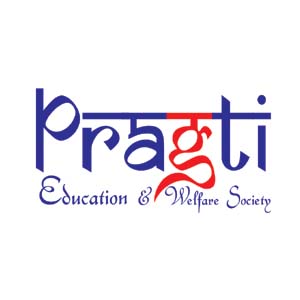Modules
- 1.0 Introduction
- 1.1 Objectives
- 1.2 What is Computer?
- 1.2.1 History of Computers
- 1.2.2 Characteristics Of Computer System
- 1.2.3 Basic Applications of Computer
- 1.3 Components of Computer System
- 1.3.1 Central Processing Unit
- 1.3.2 Keyboard, mouse and VDU
- 1.3.3 Other Input devices
- 1.3.4 Other Output devices
- 1.3.5 Computer Memory
- 1.4 Concept of Hardware and Software
- 1.4.1 Hardware 1.4.2 Software
- 1.4.2.1 Application Software
- 1.4.2.2 Systems software
- 1.4.3 Programming Languages
- 1.5 Representation of Data/Information
- 1.6 Concept of Data processing
- 1.7 Applications of IECT
- 1.7.1 e-governance
- 1.7.2 Multimedia and Entertainment
- 1.8 Summary
- 1.9 Model Questions and Answers
- 2.0 Introduction
- 2.1 Objectives
- 2.2 Basics of Operating System
- 2.2.1 Operating system
- 2.2.2 Basics of popular operating system (LINUX, WINDOWS)
- 2.3 The User Interface
- 2.3.1 Task Bar
- 2.3.2 Icons
- 2.3.3 Start Menu
- 2.3.4 Running an Application
- 2.4 Operating System Simple Setting
- 2.4.1 Changing System Date And Time
- 2.4.2 Changing Display Properties
- 2.4.3 To Add Or Remove A Windows Component
- 2.4.4 Changing Mouse Properties
- 2.4.5 Adding and removing Printers
- 2.5 File and Directory Management
- 2.6 Types of files
- 2.7 Summary
- 2.8 Model Questions and Answers
- 3.0 Introduction
- 3.1 Objectives
- 3.2 Word Processing Basics
- 3.2.1 Opening Word Processing Package
- 3.2.2 Menu Bar
- 3.2.3 Using The Help 3
- .2.4 Using The Icons Below Menu Bar
- 3.3 Opening and closing Documents
- 3.3.1 Opening Documents
- 3.3.2 Save and Save as
- 3.3.3 Page Setup
- 3.3.4 Print Preview
- 3.3.5 Printing of Documents
- 3.4 Text Creation and manipulation
- 3.4.1 Document Creation
- 3.4.2 Editing Text
- 3.4.3 Text Selection
- 3.4.4 Cut, Copy and Paste
- 3.4.5 Font and Size selection
- 3.4.6 Alignment of Text
- 3.5 Formatting the Text
- 3.5.1 Paragraph Indenting
- 3.5.2 Bullets and Numbering
- 3.5.3 Changing case
- 3.6 Table Manipulation
- 3.6.1 Draw Table
- 3.6.2 Changing cell width and height
- 3.6.3 Alignment of Text in cell
- 3.6.4 Delete / Insertion of row and column
- 3.6.5 Border and shading
- 3.7 Summary
- 3.8 Model Questions and Answers
- 4.0 Introduction
- 4.1 Objectives
- 4.2 Elements of Electronic Spread Sheet
- 4.2.1 Opening of Spread Sheet
- 4.2.2 Addressing of Cells
- 4.2.3 Printing of Spread Sheet
- 4.2.4 Saving Workbooks
- 4.3 Manipulation of Cells
- 4.3.1 Entering Text, Numbers and Dates
- 4.3.2 Creating Text, Number and Date Series
- 4.3.3 Editing Worksheet Data
- 4.3.4 Inserting and Deleting Rows, Column
- 4.3.5 Changing Cell Height and Width
- 4.4 Function and Charts CCC – Version – 3/ Revision -2 Page
- 4 4.4.1 Using Formulas
- 4.4.2 Function 4.4.3 Charts
- 7.0 Introduction
- 7.1 Objectives
- 7.2 Basics
- 7.2.1 Using PowerPoint
- 7.2.2 Opening A PowerPoint Presentation
- 7.2.3 Saving A Presentation
- 7.3 Creation of Presentation
- 7.3.1 Creating a Presentation Using a Template
- 7.3.2 Creating a Blank Presentation
- 7.3.3 Entering and Editing Text
- 7.3.4 Inserting And Deleting Slides in a Presentation
- 7.4 Preparation of Slides
- 7.4.1 Inserting Word Table or An Excel Worksheet
- 7.4.2 Adding Clip Art Pictures
- 7.4.3 Inserting Other Objects
- 7.4.4 Resizing and Scaling an Object
- 7.5 Providing Aesthetics
- 7.5.1 Enhancing Text Presentation
- 7.5.2 Working with Color and Line Style
- 7.5.3 Adding Movie and Sound
- 7.5.4 Adding Headers and Footers
- 7.6 Presentation of Slides
- 7.6.1 Viewing A Presentation
- 7.6.2 Choosing a Set Up for Presentation
- 7.6.3 Printing Slides And Handouts
- 7.7 Slide Show
- 7.7.1 Running a Slide Show
- 7.7.2 Transition and Slide Timings
- 7.7.3 Automating a Slide Show
- 8.0 Introduction
- 8.1 Objectives
- 8.2 Why Savings are needed?
- 8.2.1 Emergencies
- 8.2.2 Future Needs
- 8.2.3 Large expenses
- 8.3 Drawbacks of keeping Cash at home CCC – Version – 3/ Revision -2 Page 6
- 8.3.1 Unsafe
- 8.3.2 Loss of Growth Opportunity
- 8.3.3 No Credit Eligibility
- 8.4 Why Bank is needed?
- 8.4.1 Secure Money, Earn Interest, Get Loan
- 8.4.2 Inculcate habit of saving
- 8.4.3 Remittances using Cheque Demand Draft
- 8.4.4 Avoid risk of chit funds, sahukars
- 8.5 Banking Products
- 8.5.1 Types of Accounts and Deposit
- 8.5.2 Types of Loan and Overdrafts
- 8.5.3 Filling up of Cheques, Demand Drafts
- 8.6 Documents for Opening Accounts
- 8.6.1 Know your Customer (KYC)
- 8.6.2 Photo ID Proof, Address Proof
- 8.6.3 Indian Currency
- 8.7 Banking Service Delivery Channels - I
- 8.7.1 Bank Branch, ATM
- 8.7.2 Bank Mitra with Micro ATM
- 8.7.3 Point of Sales
- 8.8 Banking Service Delivery Channels - II
- 8.8.1 Internet Banking
- 8.8.2 National Electronic Fund Transfer (NEFT),Real Time Gross Settlement (RTGS)
- 8.9 Insurance
- 8.9.1 Necessity of Insurance
- 8.9.2 Life Insurance and Non-life Insurance
- 8.10 Various Schemes
- 8.10.1 Pradhan Mantri Jan-Dhan Yojana (PMJDY)
- 8.10.2 Social Security Schemes
- 8.10.2.1 Pradhan Mantri Suraksha Bima Yojana (PMSBY)
- 8.10.2.2 Pradhan Mantri Jeevan Jyoti Bima Yojana (PMJJBY)
- 8.10.2.3 Atal Pension Yojana (APY)
- 8.10.2.4 Pradhan Mantri Mudra Yojana (PMMY)
- 8.10.3 National Pension Scheme
- 8.10.4 Public Provident Fund (PPF) Scheme
- 8.11 Bank on your mobile
- 8.11.1 Mobile Banking
- 8.11.2 Mobile Wallets





.jpg)
